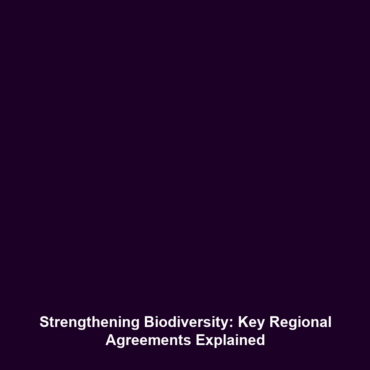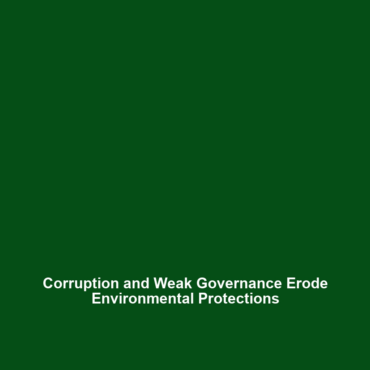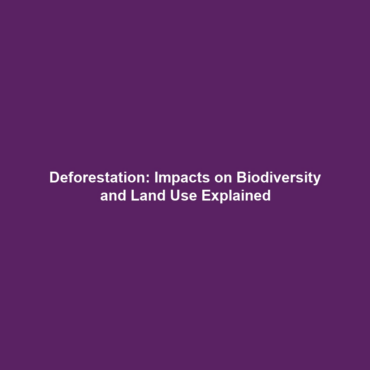<>
Regional Agreements and Initiatives Aimed at Protecting Biodiversity
Deforestation and biodiversity loss have become pressing global issues that threaten ecosystems and human livelihoods. Regional agreements and initiatives, particularly the European Union’s Biodiversity Strategy, play a crucial role in addressing these challenges. This article delves into the significance of these agreements in safeguarding biodiversity, highlighting their principles, applications, and future advancements aimed at maintaining ecological balance.
Key Concepts in Biodiversity Protection
The European Union’s Biodiversity Strategy outlines key principles that serve as foundational elements for regional agreements aimed at protecting biodiversity. These concepts include:
- Conservation of Habitats: Protecting natural habitats is vital to maintaining biodiversity.
- Sustainable Management: Sustainable practices in agriculture and forestry are essential to mitigate deforestation.
- Legal Frameworks: Implementing strong environmental laws fosters accountability in preserving biodiversity.
These principles closely align with the broader category of deforestation and biodiversity loss, underpinning the ongoing efforts to protect ecosystems and wildlife.
Applications and Real-World Uses
Regional agreements and initiatives, such as the European Union’s Biodiversity Strategy, have led to several practical applications in combating deforestation and biodiversity loss:
- Protected Areas: Establishing national parks and nature reserves to conserve critical habitats.
- Community Engagement: Involving local communities in conservation efforts fosters stewardship and sustainable use of resources.
- Biodiversity Monitoring: Implementing programs to track biodiversity metrics facilitates adaptive management strategies.
Understanding how local initiatives are implemented within the framework of the European Union’s Biodiversity Strategy is crucial for effective environmental governance in the face of biodiversity loss.
Current Challenges in Biodiversity Protection
Despite the progress made through regional agreements, several challenges remain in applying these initiatives effectively:
- Funding Limitations: Inadequate financial resources hinder the implementation of conservation projects.
- Political Resistance: Changes in political leadership can lead to inconsistencies in policy enforcement.
- Data Collection Issues: Lack of robust data makes it difficult to assess biodiversity status and trends.
These challenges of biodiversity initiatives underline the need for continuous advocacy and innovative solutions.
Future Research and Innovations
Research into regional agreements and the impact of initiatives like the EU’s Biodiversity Strategy are evolving, with several areas of focus emerging:
- Next-Gen Technologies: Innovations in remote sensing and AI can enhance biodiversity monitoring efforts.
- Collaborative Frameworks: International partnerships may improve resource-sharing and knowledge transfer between regions.
- Community-Centric Models: Engaging local populations through participatory approaches can lead to more sustainable outcomes.
Such advancements are critical for tailoring future strategies to combat deforestation and biodiversity loss.
Conclusion
Regional agreements and initiatives like the European Union’s Biodiversity Strategy are pivotal in the global fight against deforestation and biodiversity loss. By understanding their key concepts, applications, challenges, and future innovations, stakeholders can better navigate the complexities of biodiversity protection. It is imperative for governments, organizations, and individuals to engage actively in these initiatives to foster a more sustainable future. For further reading on biodiversity conservation strategies, explore our resources on future research and innovations and key concepts in biodiversity.


